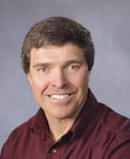 Today's column is for those people who have been walking for fitness
on a regular basis, and would like to upgrade their exercise program
to include a reasonable running routine. Running is one of the best
aerobic activities for cardiovascular conditioning and calorie
burning, but it must be approached cautiously to reduce the risk of
injury. This is especially important for older adults and heavier
individuals.
Today's column is for those people who have been walking for fitness
on a regular basis, and would like to upgrade their exercise program
to include a reasonable running routine. Running is one of the best
aerobic activities for cardiovascular conditioning and calorie
burning, but it must be approached cautiously to reduce the risk of
injury. This is especially important for older adults and heavier
individuals.
The major difference between walking and running is the non-support
period that greatly increases landing forces and musculoskeletal
stress. When we walk one foot is always in contact with the ground,
and our forward foot hits the surface with a force equal to about half
our bodyweight. However, when we run there is a non-contact phase when
both feet are off the ground, and our forward foot strikes the surface
with a force greater than three times our bodyweight.
To reduce the effects of running impact forces, I recommend the following precautions.
First, buy high-quality running shoes with good shock absorption capacity. Be sure to find a salesperson who is knowledgeable about running shoes and selects a model that matches your foot type (straight last, curved last, low arch, high arch, narrow foot, wide foot, etc.). Also, try to replace your running shoes every 300 to 500 miles depending on your bodyweight, as the shock absorbing midsoles typically lose their resiliency after this amount of use.
Second, wear relatively thick and absorbent socks, preferably with reinforced sections under the heel and metatarsal (ball of foot) areas.
Third, attempt to do most of your running on dirt paths or grassy surfaces. Try to avoid asphalt as much as possible because it is very hard and usually slanted, making it more likely to encounter overuse injuries. Never run on concrete, as it is much harder than asphalt and more stressful to your musculoskeletal system. I do most of my running on a grassy athletic field or a cinder track, taking to the roads only when the weather is inclement (rain or snow).
Fourth, start on relatively flat terrain, where you can concentrate on efficient running form and consistent pacing. Mastering hills can be challenging because uphill running places extra effort on the cardiovascular system and downhill running places extra stress on the musculoskeletal system.
Fifth, with respect to running form, the single most important concept is to run tall. Running tall is equivalent to running light, and both are essential for enjoyable running experiences. Do not lean forwards, backwards, or slouch, as all of these posture deviations lead to lower back stress and interfere with proper running mechanics. Consider these points when assessing your running technique.
- Head: Erect, with eyes focused forward about 10 to 20 yards.
- Shoulders: Square and level, without rounding or swinging forwards or backwards.
- Arms: Relaxed and swinging freely from the shoulders in forwards and backwards movements (not across the body). Elbows should be bent approximately 90 degrees with forearms remaining roughly parallel to the ground.
- Hands: Relaxed and loose with thumb lightly touching fingers.
- Torso: Erect, with chest up and plenty of room for the diaphragm to move for proper breathing actions.
- Hips: Square and level, with no sidewards movement.
- Legs: Relaxed thigh action, with pendular movements and moderate knee lift.
- Feet: Pointed straight ahead, landing full-footed or slightly heel first and directly under the hips.
Now that you know how to run safely, effectively, and efficiently, let's look at a sample training program that makes a progressive transition from walking to running. Keep in mind this is merely a model, and you may need to spend more time on each training segment.